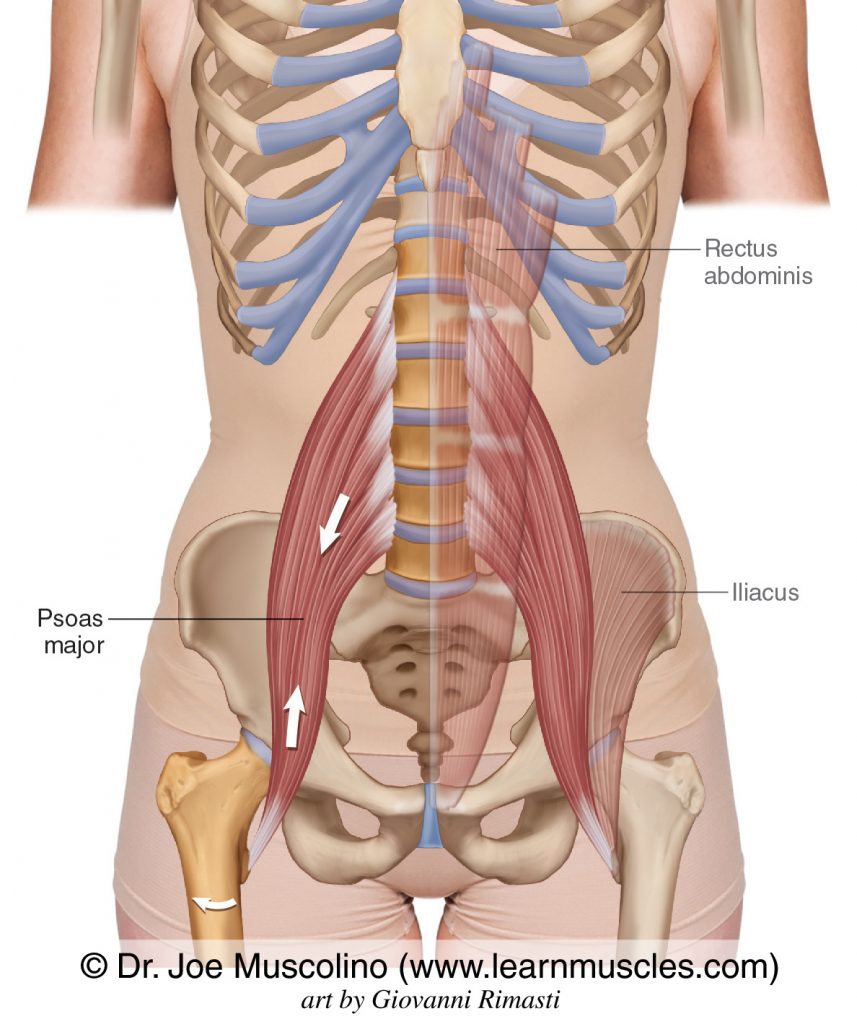- Click here for access to the full Anatomy Glossary.
- Right click on the image for a downloadable file of this muscle.
- Use of this artwork requires proper credit to be given (Permission: Dr. Joe Muscolino. www.learnmuscles.com – art work Giovanni Rimasti)

The Psoas Major is one of the twelve hip joint flexors (open-chain joint action of flexion of the thigh at the hip joint and closed-chain joint action of anterior tilt of the pelvis at the hip joint).
The Hip Flexor Group (from lateral to medial) comprise:
- Gluteus minimus (anterior fibers)
- Gluteus medius (anterior fibers)
- Tensor fasciae latae (TFL)
- Rectus femoris
- Sartorius
- Iliacus
- Psoas major
- Pectineus
- Adductor longus
- Gracilis
- Adductor brevis
- Adductor magnus (anterior head)
ATTACHMENTS:
- Anterolateral lumbar spine to the lesser trochanter of the femur.
- The spinal attachments are onto the anterolateral bodies of T12-L5 and the discs between and the transverse processes of L1-L5
ACTIONS:
- Flexes the thigh at the hip joint.
- Anteriorly tilt the pelvis at the hip joint.
- Flexes the trunk at the spinal joints.
- Laterally rotates the thigh at the hip joint.
- Contralaterally rotates the pelvis at the hip joint.
NOTES:
- The iliacus and psoas major attach together onto the lesser trochanter of the femur. For this reason, they are sometimes named as one muscle: the iliopsoas.
- The psoas major is the only hip flexor that also crosses spinal joints.
- The line of pull of the psoas major on the spine crosses very close to the axis of movement in the sagittal plane, so the psoas major causes a great deal of compression upon the spine. Compression is good in that it adds to spinal stability, but bad in that it compresses the discs.
- If the degree spinal extension/lordosis increases sufficiently, the line of pull of the psoas major in the sagittal plane can move posterior to the mediolateral axis of motion and the psoas major can change from being a flexor of the spine to being an extensor of the spine.
